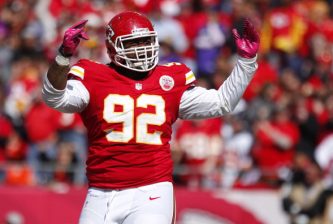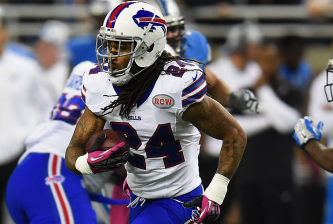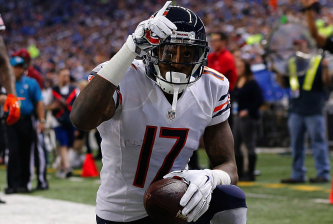Jared Goff, Cal ~ Sam Bradford, Philadelphia Eagles
The parallels between these two are stunning, aside from Bradford being a good 15-plus pounds heavier coming out of Oklahoma. Like Bradford, Goff is a rhythm based passer that does most of his damage near the middle of the field. He is more than capable of going through full-field reads quickly, but that puts him in a lot of poor situations, too. Goff counts too heavily on the play going as it was drawn up, so a disguised coverage, poaching defender or blanketed receiver will entirely ruin a play for him. Of course, that makes a play tougher on any quarterback, but neither of these two quarterbacks adjust well when they have to make an off-kilter play. Likewise, neither passer is all that threatening when working the intermediate-deep areas outside of he numbers. That may be a rather specific area of the field, but many of the toughest throws to make are in that area and struggling there allows defenses to be more comfortable clogging the middle of the field. Goff can step in day one and keep an offense on schedule, but to hope for him to be a quarterback who can make plays and create offense is a lofty expectation.
Carson Wentz, North Dakota State ~ Zach Mettenberger, Tennessee Titans
Only one thing really separates these two players: athleticism. Mettenberger can not run to save his life, while Wentz has plenty of athleticism to run for a few hundred yards a year. Though, as passers, the two are nearly identical. Both of them have a tendency to stare down their first read, as well as struggle with moving their feet and throwing accurately if forced to move on from that first read. Wentz and Mettenberger are both often praised for their arms, but neither of them throw well down the field or show impressive touch consistently. Their successes are, more often than not, YOLO-balls down the seam and they display little big throw ability outside of that. Wentz can not really be trusted to make anything other than routine throws, and he has shown that even that can be a stretch. It has been mesmerizing to see Mettenberger drafted rightfully in the 6th round two years ago, while Wentz may go first overall this year.
Shaq Lawson, Clemson ~ Everson Griffin, Minnesota Vikings
For starters, both Lawson and Griffin passed the Force Players filter, a highly predictive combine-based metric designed by Justis Mosqueda. Lawson is a strong, speed-to-power based pass rusher that has multiple moves in his arsenal that will give offensive tackles fits. He can still bend the edge a fair amount, too, even if that is not the primary way in which he wins. Both of them make great use of their power and maximize it by coordinating their legs and hands in unison. Oddly enough, both have perfected a deadly spin move, too. In due time, Lawson will become the 9-12 sacks per year producer that Griffin is.
Vernon Hargreaves, Florida ~ Brent Grimes, Tampa Bay Buccaneers
Despite being short cornerbacks, Hargreaves and Grimes can get vertical without problem (or at least Grimes could in his prime). In fact, Hargreaves tested out as a freakish athlete overall, landing himself in the 98th percentile. Hargreaves doesn’t predicate his game on athletic ability, though. Like Grimes, he is a smart, footwork based cornerback that can get in and out of breaks quickly, as well as make stunning plays when covering tight areas of the field. Due to their size, both of them have shown some struggle against receivers who know how to use their body well, but with as athletic and technically sound as they both are, they can often find sneaky paths to the ball. Both have the flexibility to play outside or in the slot. They are a rare breed of small cornerbacks that can still find the ball consistently and keep up with any receiver.
DeForest Buckner, Oregon ~ Chris Canty, Baltimore Ravens
Towering over everyone else at 6’7″ and roughly 300 pounds, Buckner and Canty provide a stout piece along the defensive line. They are both brutalizing run defenders, showing off great strength and use of their length to fill gaps and create separation from offensive linemen. Though, neither of them are spectacular open field athletes, which could lead to a missed tackle for loss or two. Luckily, they make up for those few misses with how consistently they win at the line of scrimmage. Like Canty, Bucnker can only win as a pass rusher with his power. He is a great pocket pusher, but he is rarely able to finish plays. That does mean he is doing some work to create space for other rushers, though, and that certainly has value. Buckner is going to be foundation defensive piece for the next decade, just as Canty has been.




